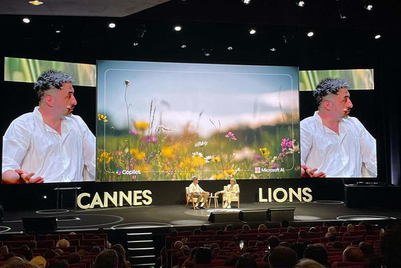
If you’ve seen the marketing (or perhaps lack of it) directed at senior citizens in Asia, you might think they are stubbornly change-resistant and anti-technology. My family group chat—comprising mainly relatives in their 60s—seems to suggest they can be quite the opposite. The group gets so active, I discreetly mute it for longer than I dare to admit.
Truth is seniors “represent one of the largest, fastest-growing, wealthiest and least contested market segments, (so) why are so few businesses focused on them[1]?" And why do even fewer use modern marketing through technology and data that make their experiences better, less blunt and more mutually valuable?
Let’s look at why seniors matter to brands, then how to make brands matter to seniors.
They spend
While many businesses covet youths, seniors earn a lot more than millennials do[2].
Singapore, for example, is the world’s most rapidly aging nation[3], with seniors retiring at 67 and living into their 80s. That means there are more of them, earning and spending for a longer time than ever before.
In just three years, the silver market in Singapore will be worth SG$61 billion[4].
They share
Seniors merrily pass around well-intentioned messages on fraud warnings, cautionary tales, funny videos and ‘lobang’ (good deals) via private channels such as WhatsApp and email. If I may misappropriate a tongue-firmly-in-cheek saying: the fastest ways to spread a message are telephone, television and tell-a-senior.
Purists might argue, with merit, that these are probably because seniors are less tech-savvy. Pragmatists, however, will see opportunity in reaching them and triggering an almost knee-jerk tendency to share. And marketers know word-of-mouth can be more powerful than any other channel.
They surf
The proportion of Singapore seniors aged 55 and above with at least secondary school education has climbed from 38.8 percent to 45.3 percent in just four years[5], and will continue to rise with the entrance of post-independence boomers. We are at the tipping point where the literacy barrier to seniors using technology is quickly being erased and will very soon be the exception rather than the rule.
As it is, they are already very digitally active. Google’s 2016 Connected Customer survey shows that four in five Singapore seniors own at least one connected device. Of those who use the internet outside of work, four in five do so daily, consider it “fun” and use it as their first port of call for information. Two in three prefer performing tasks digitally if they can. Lazada reports that its traffic from e-commerce shoppers aged 55 and above has been doubling month-on-month, and some of its oldest customers are in their 80s. That hardly sounds like a digital divide, does it?
Just don’t call them old
Given these growth stories, it would be remiss to not give seniors the focus they warrant.
Interestingly though, they tend to see themselves as 10 to 15 years younger than they are[6]. So if businesses want seniors to buy what they are selling, they need to fish where the fish are without watering down the way they communicate.
It’s time to expand their palette with modern marketing techniques and question the long-established formula of didactic communications on traditional media, in ‘mother tongue’ languages.
To connect with seniors, US insurer Humana analysed what they say on (of all places) dating site Match.com, then used these insights to develop digital content for its #StartWithHealthy campaign. Closer to home, instead of nagging seniors to use the roads safely, the Singapore Traffic Police gave out hearing, sight and reaction time testing kits through digital installations in its “Are You A Road Master?” campaign.
With imagination and an appetite for experimentation, there are many more possibilities. Instead of radio spots on exercising, how about embedding senior-specific tasks within Pokemon Go? Instead of TVCs on nutritional supplements, how about health nuggets that can be spread via WhatsApp? Instead of outdoor ads on tour packages, how about suggesting travel ideas in response to search and purchase behaviour in other categories?
After all, the consumer, as a certain David Ogilvy famously said, is not a moron. She is your wife (or in this case, your mother). And no mother wants to be treated like she is old, unworldly, and won’t get it.
Do:
- Consider how modern marketing techniques can help with understanding and engaging seniors
- Rethink the channels through which you reach seniors
- Give them content they can share
Don’t
- Neglect seniors in your marketing
- Rely on outmoded impressions of seniors
- Patronise seniors.
Frederick Tong is strategy director at Ogilvy & Mather Singapore
[1] Singapore-based entrepreneur and academic Hugh Mason’s blog
[2] Euromonitor 2016 vs 2030 projections
[3] Prime Minister Lee Hsien Loong at Ho Rih Kwa lecture
[4] Silver Economy Index, 2015
[5] Singstat, 2016 and 2012
[6] Advances in Advertising Research Vol. VII, 2016


.jpg&h=334&w=500&q=100&v=20250320&c=1)



.png&h=334&w=500&q=100&v=20250320&c=1)



.png&h=334&w=500&q=100&v=20250320&c=1)




+1.jpg&h=268&w=401&q=100&v=20250320&c=1)
.png&h=268&w=401&q=100&v=20250320&c=1)
.png&h=268&w=401&q=100&v=20250320&c=1)

